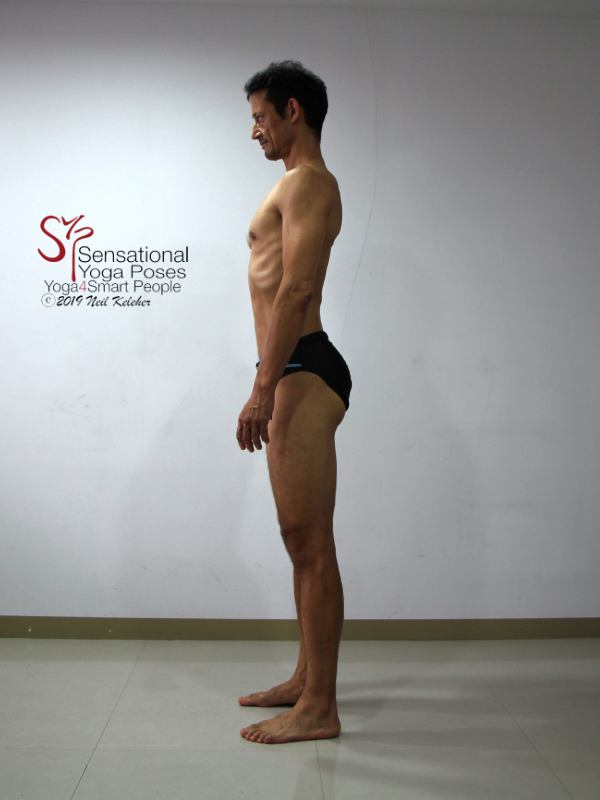Improve your posture
Develop and improve awareness of your spine, ribcage and head for better breathing better posture and as a foundation for your arms and legs
For improving both breath and posture, key elements can include learning to feel and control your spine, your ribcage and even your pelvis. That being said, one of the biggest things you can work on controlling is the position of your head relative to your ribcage.
Generally when I teach people how to improve posture, I don't focus on having them hold good posture (at least not initially). Instead I teach them rhythmic exercises that allow them to feel their posture. Those same rhythmic exercises can also be used to teach better breathing. These same exercises can also be used to feel the ribcage and spine (as well as the position of the head relative to the ribcage).
Improve your posture Index
A good starting point for improving both breath and posture is to focus on feeling your spine. You can do this while sitting or standing. In either case the focus is on simple repeated movements that alternate activation with relaxation so that the elements of your spine are easier to feel. The instructions in feel your spine are given assuming a seated position (you can do it while sitting in a chair) but they could also just as easily be used while standing. Generally when I teach students to feel their spine while standing I tend to have them stand with knees comfortably bent, with feet shoulder width apart and either parallel or comfortably turned out.
For an overview of feeling and controlling your ribcage, with a focus on improving rib cage mobility and stability (and how working on both can affect the shoulders in a good way) read Ribcage mobility.
For more on the anatomy of stabilizing the ribcage, check out the intercostal muscles. These are the muscles that connect between adjacent ribs. There's two layers and in function these muscles are very similiar to the obliques. Where the obliques help to control the relationship between the ribcage and the pelvis, the intercostals help to control the relationship between adjacent ribs. Note that both the intercostals and the obliques have two layers. Find out more about the external obliques and the internal obliques.
Note that both the obliques and intercostals can be used to help twist the ribcage or to help it resist being twisted!
One of the most interesting experiences of my life was when I first learned to feel and move my lower back ribs. I learned in an acting class. I actually include a series of exercises in smart yogi proprioceptive elements program to improve ribcage awareness and control in general. However, you can get a good head start on feeling your back ribs by learning about the levator costarum.
In addition, check out these upper back exercises for improving awareness, control and ribcage posture.
Rather than trying to hold good posture from the get go, one approach is to learn to feel how your head and ribcage relate to each other, and in particular noticing your ribcage posture.
How do you learn to feel how your head and ribcage relate? By moving them.
In fixing forward head posture exercises are included for feeling your ribcage and your head and how they relate while sitting, which is probably where you'll encounter forward head posture the most, sitting while peering at a computer. It also includes a simple belly breathing exercise (that leads to a slightly more advanced diaphragmatic breathing exercise) to make it easier to learn to hold good posture.
For more on fixing your posture, particularly while standing, check out slouch to zero slouch exercises to fix your posture..
You can also read yoga to improve your posture.
One common problem I see with a lot of students is difficulty with belly breathing. A lot of it seems to stem from a lack of awareness of their ribcage and shoulders and also an inability to use their transverse abdominis.
Lessons in muscle control for your spine includes simple exercises for improving awareness and control of the spine.
For a course that focuses on ribcage mobility and awareness, check out the Basic ribcage mobility and control course.
Published: 2020 01 18
Updated: 2020 08 28



